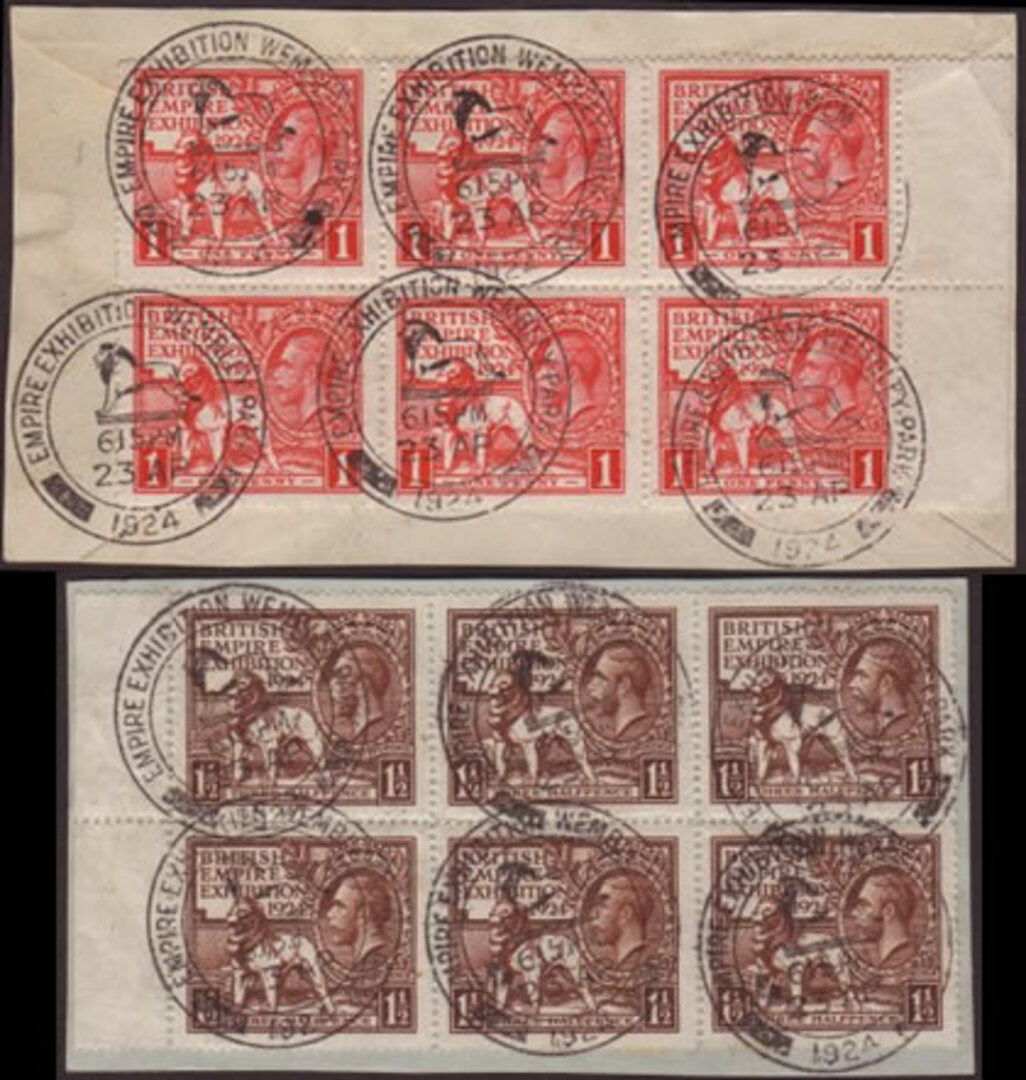Wembley Exhibition...1924-25 Postal History
The famous "Wembley Exhibition", was opened by King George V on 23 April 1924. It was the largest Exhibition staged anywhere in the world - of the British Empire's 58 countries only Gambia and Gibraltar did not participate. It cost £12 million, and attracted a staggering 27 million visitors.
Its official aim was "to stimulate trade, strengthen bonds that bind mother Country to her Sister States and Daughters, to bring into closer contact the one with each other, to enable all who owe allegiance to the British flag to meet on common ground and learn to know each other".
A special railway loop line and station were built to connect the site to London Marylebone Station. The Exhibition sites were linked by light railways, such as the screw-driven 'Never-Stop Railway'.
Most of the exhibition halls were intended to be temporary and demolished afterwards, but at least the Palace of Engineering and the British Government Pavilion survived into the 1970s, if only because of the high cost of demolition of the huge concrete structures. The Empire Pool became the Wembley Arena, and the Empire Stadium became Wembley Stadium, the home of football until 2002.
The Exhibition was also the first occasion for which the British Post Office issued commemorative postage stamps. Two stamps featuring Lions were issued on 23 April 1924: a 1d in red and a 1 1/2d in brown, both being inscribed "British Empire Exhibition 1924"; they were designed by H. Nelson. A second printing, identical to the first apart from the year being changed to 1925, was issued on 9 May 1925. Various Postal markings were used throughout the Exhibition with circular date stamps, slogan cancels, oval Registered and Official cachets etc, all extremely sort after by collectors.

 General
General
 General
General
 General
General